From giant crystals in a cave to the walls of your home, gypsum is an incredibly common and wondrous mineral. This post will explore the usefulness of gypsum in geology and in your home.
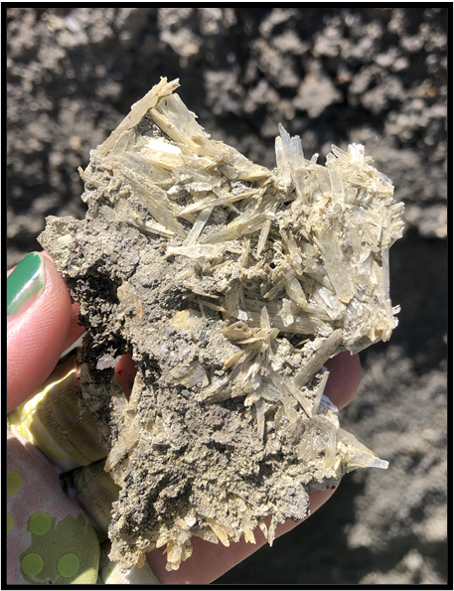
What is Gypsum?
The word gypsum is derived from the Greek ‘gypsos’ meaning plaster1. Gypsum is a common mineral that belongs to a group of minerals called sulfates (because it contains the element sulfur in its chemical formula CaSO4*2H2O). Gypsum comes in an array of colors ranging from clear, white, gray, yellow, red, brown, and pink. On the Mohs hardness scale (a scale of 1-10 that determines the strength of a mineral compared to other minerals) gypsum is very soft, only reaching a 2; you can scratch it easily with your fingernail! Gypsum also comes in a variety of forms that range from massive material, fibrous crystals, thicker tabular shapes, and even in rosettes (mimicking the shapes of roses). Gypsum forms from the evaporation of water (could be from large seaways or small amounts of trickling groundwater) that contains high amounts of calcium and sulfates, thus gypsum is also referred to as an evaporite mineral.
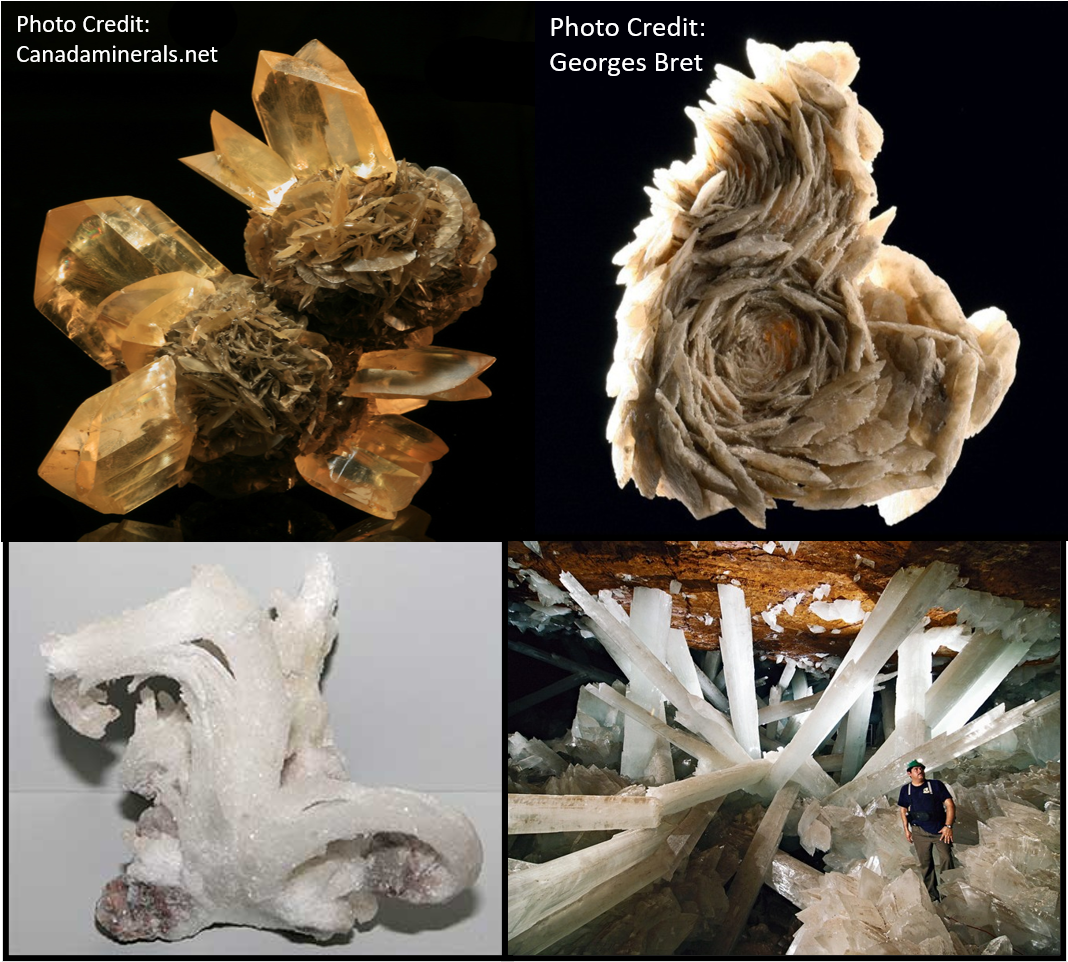
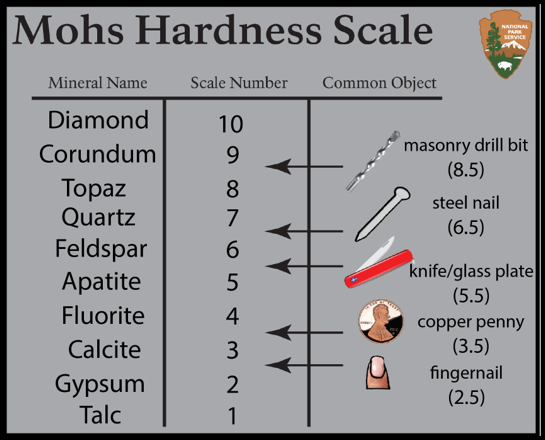
Gypsum in Geologic History
Gypsum is found on every continent and in multiple localities on each continent. The images above portray the mineral as smaller individual crystals, however it is most commonly found as massive sedimentary rock units deposited in ancient geologic history. Due to the formation process of gypsum it is an incredibly useful mineral for understanding past environments. The massive units of gypsum found in the rock record indicate an ancient sea was present, but eventually evaporated when the ancient climate changed and the seas disappeared.
Here in New Mexico there are two geologically famous locations of these massive gypsum deposits. The first is a thick rock unit called the Todilto Formation, which formed approximately 159 million years ago from the evaporation of an ancient body of saline-rich water that contained high amounts of calcium and sulfate2. This formation is found in the Ojito Wilderness Area in San Ysidro, NM. This rock layer, combined with the rest of the rock units found in this region, describe a transition from a land dominated environment of primarily rivers and smaller saline bodies of water, to one of completely being submerged by a larger interior seaway (called the Western Interior Seaway) that covered a large portion of Western North America some 100-60 million years ago.
If you recall the first image, it is selenite, also found in this area, but it is not associated with this ancient gypsum deposit. Due to the warm and arid climate of this region gypsum forms here through the evaporation of meteoric water that hits the surface, interacts with the calcium-sulfate-rich soils and forms gypsum as the water evaporates. This is very common in arid regions where surface water does not stay liquid for very long.
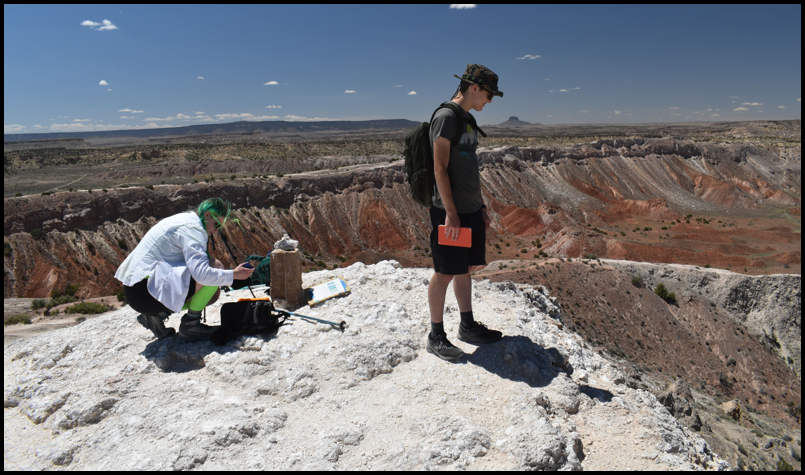
The second and perhaps most famous locality of a large gypsum deposit is White Sands National Park in Southern New Mexico, East of the San Andres Mountains. The dunes of gypsum found here started their journey around 250 million years ago when gypsum was originally formed from evaporation of what was called the Permian Sea. Over the course of millions of years the topography changed from continuous mountains to ultimately a basin with mountains on either side. The San Andres mountains now sit on the western side of the basin that once held a lake (Lake Otero). As the climate warmed around 12,000 years ago snow-melt in the mountains and rain carried the dissolved, ancient gypsum into the lake3. As the climate became more and more arid and warm the lake ultimately evaporated and the gypsum precipitated out. Winds would carry the small gypsum particles creating the dune fields we enjoy today!

Gypsum in Your Home?
Yes! There is a very good chance you have gypsum in your home! Many homes have gypsum board (or drywall or sheetrock – all the same thing) walls covering studs and you guessed it, that is made from gypsum! The first civilization to use gypsum as part of a building material was in 3700 B.C.; Egyptians used a combination of plaster and gypsum blocks in the building of the pyramid of Cheops4. In the 1700s plaster of paris became a prominent building material made of raw gypsum that is altered with heat. Gypsum board became a common building material in the late 1800s and became an especially popular building material after World War II as plaster faded out4. This material is heavily used today as it is an easier material to build with and cost effective.
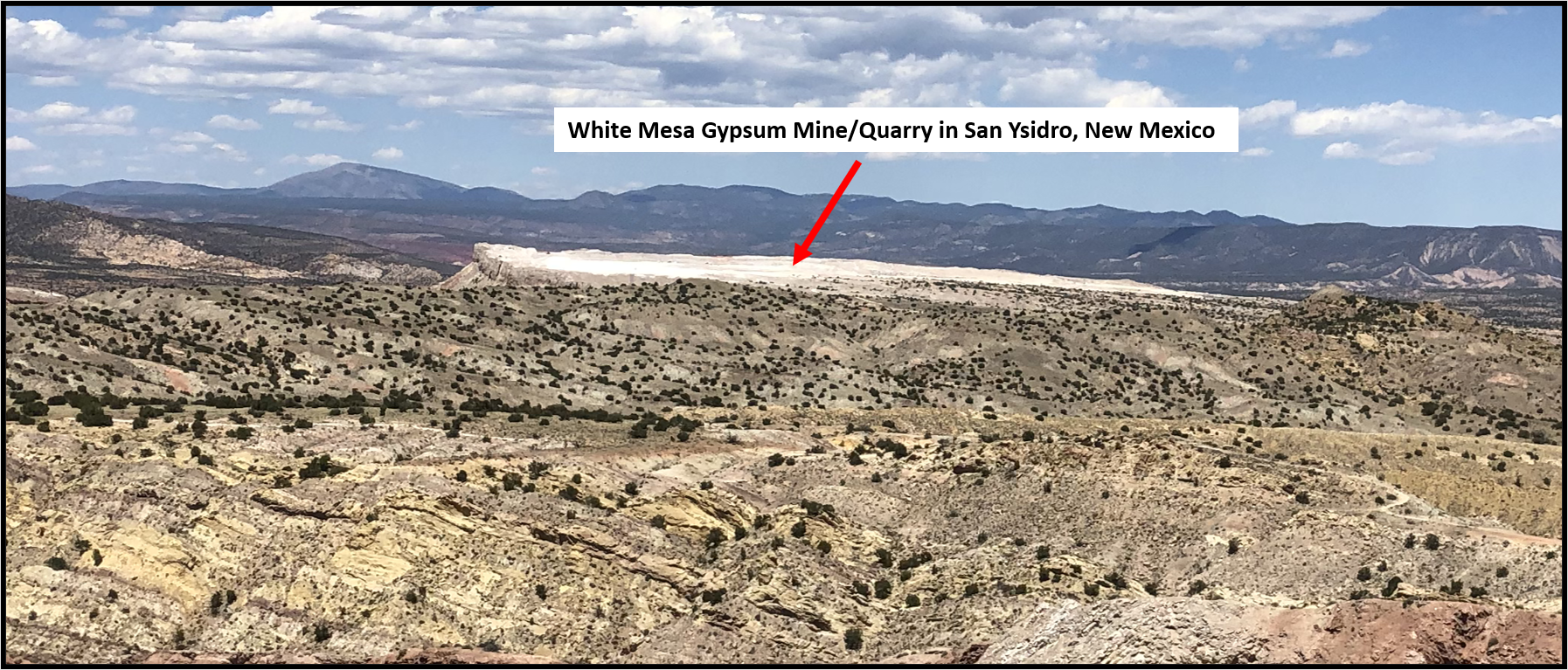
Can You Find Gypsum Near You?
Follow this link to see if you can find gypsum where you live! Once you arrive, scroll down to the bottom and examine the “Locality List”! https://www.mindat.org/min-1784.html#autoanchor24
References:
1 Gypsum, Mindat.org, Accessed June 11th, 2021.
2 San Ysidro Anticline, New Mexico Bureau of Geology & Mineral Resources, https://geoinfo.nmt.edu/tour/landmarks/san_ysidro/home.html Accessed, June 10th, 2021.
3 Geology of White Sands, National Park Service, 2020, https://www.nps.gov/whsa/learn/geology-of-white-sands.htm Accessed, June 10th, 2021.
4 The History of Drywall and Sheetrock, 2021, https://didyouknowhomes.com/the-history-of-drywall-and-sheet-rock/ , Accessed June 10th, 2021.
